Theculture of the Northeast presents its own characteristics inherited from the interaction of the culture of the Portuguese colonizers, the blacks and the Indians.
It is important to emphasize that culture represents a complex web. It includes knowledge, customs, arts, beliefs, religious cults, popular literature, dances and habits of a particular group.
The culture of the Brazilian Northeast (which comprises the states of Maranhão, Piauí, Ceará, Rio Grande do Norte, Paraíba, Pernambuco, Alagoas, Sergipe and Bahia) has developed its own habits in relation to the world and cultural manifestations. These habits have been passed down from generation to generation.
Cultural Manifestations of the Northeast
The cultural manifestations that stand out in the northeast region of Brazil are:June festivals, Reisado, popular poetry, handicrafts, capoeira, frevo, cuisine and many Christian and Afro-Brazilian religious manifestations.
June Parties
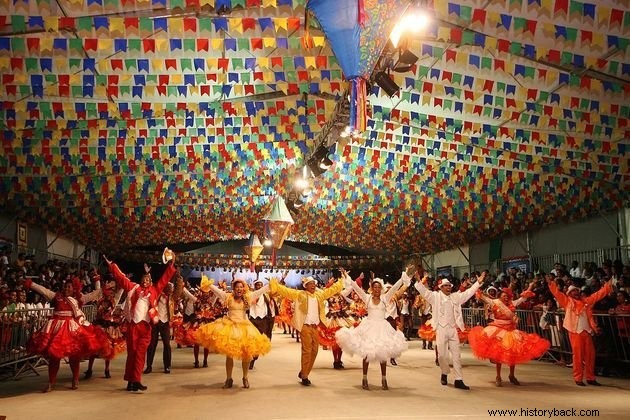
The June festivals, the main festivals that represent the culture of the Northeast, are celebrated in the month of June.
They are celebrated with typical dances such as quadrilha and forró, flags, balloons and fireworks. The June festivities pay homage to the following Catholic saints:Saint Anthony (13/06), Saint John (24/06) and Saint Peter (29/06).
Corn and coconut foods are typical of the season. These include hominy, pamonha, corn cake and pé de moleque prepared with manioc dough, roasted corn, boiled corn, quentão etc.
The city of Caruaru, state of Pernambuco, is considered the capital of forró. The city of Campina Grande, in Paraíba, is recognized for holding the largest São João in the world.
Reisado
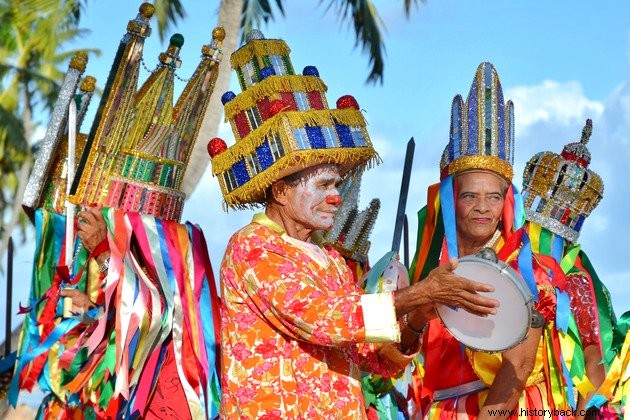
Reisado is a Catholic festival that celebrates the visit of the Magi to the baby Jesus . This festival is part of the culture of the northeast, being celebrated in some states, among them Alagoas and Piauí.
Reisado or Folia dos Reis brings together a group of revelers dressed in typical clothes decorated with ribbons and mirrors. They visit the homes of the hospitable people, dancing and singing the typical songs of the festival.
Popular Poetry
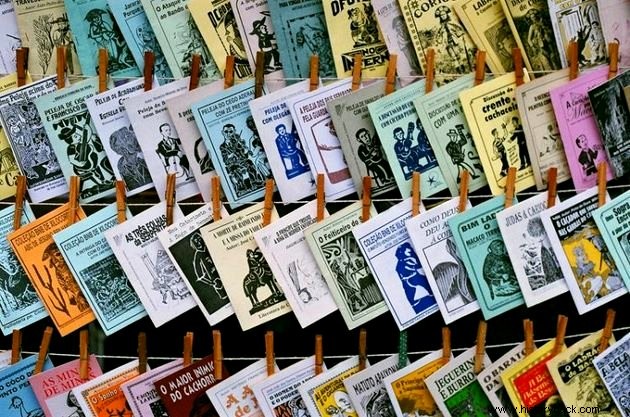
Popular poetry is represented by cordel literature, recited or published in pamphlets. This type of poetry relates the customs and beliefs of the people, in which the characters can be real or fictional.
The repentistas are the singers who spread the popular poetry of the culture of the Northeast.
Crafts
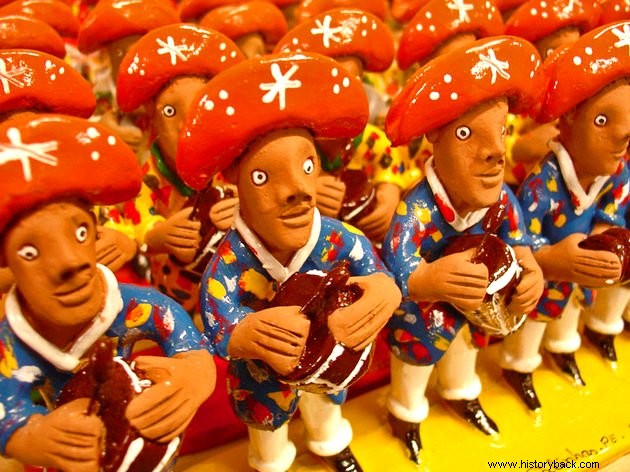
The craftsmanship of the Northeast Region is quite diversified. The region produces decorative and utilitarian works made of ceramics, wood, shells, lace, among other materials.
The art of lace was brought by the Portuguese, where the lace-making woman is a typical character of the culture of the Northeast.
Capoeira
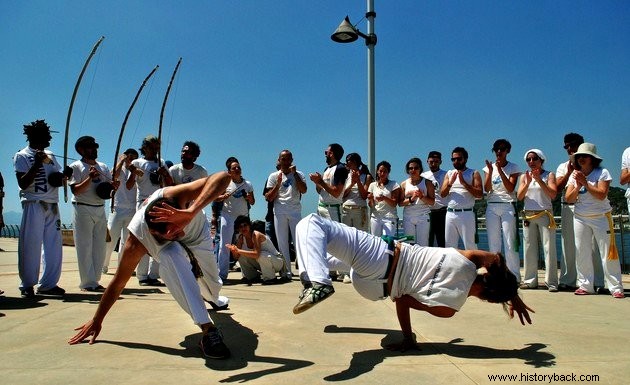
Capoeira is a cultural manifestation that involves fight, dance and music. Your exercise is accompanied by the sound of the berimbau, applause and people singing.
Created by slaves, capoeira is widespread in Bahia and recognized as a Cultural and Intangible Heritage of Humanity.
Frevo
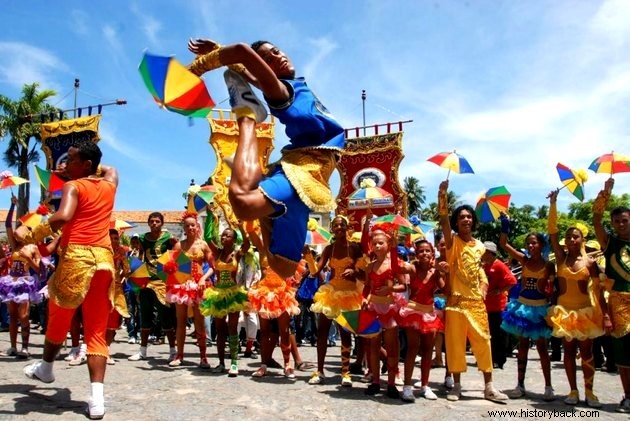
Frevo is a typical dance of Pernambuco's carnival. It has been declared Intangible Heritage of Humanity by the United Nations Educational, Scientific and Cultural Organization (UNESCO).
This dance is characterized by an accelerated rhythm, where the dancers perform acrobatic steps, carrying the typical colored frevo umbrella in one hand.
Cooking
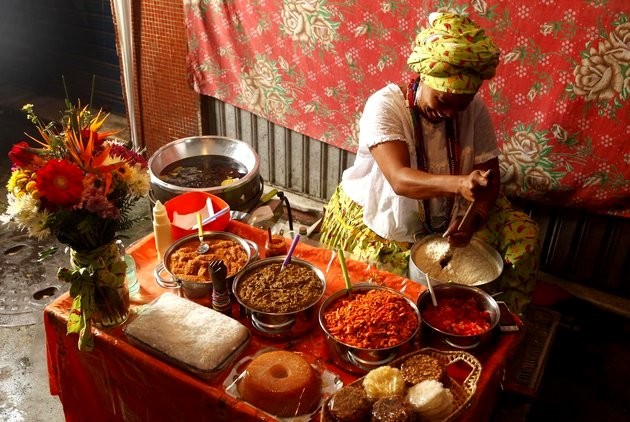
Northeastern cuisine was developed under the influence of Portuguese, African and indigenous food.
The consumption of roots, the preparation of well seasoned and spicy foods, corn and coconut foods, couscous, pamonha and hominy are legacies that have been adapted in each state.
Examples of roots are:cassava, yam, sweet potato. As for well-seasoned foods, we can mention:acarajé, vatapá, shrimp bobó, fish moqueca, sururu.
Christian Religious Feasts
Several religious events are part of the Northeastern cultural manifestations.
Among the very popular Christian festivals in the Northeast, the Romaria de Finados de Juazeiro do Norte, in Ceará, brings together thousands of people. The event honors Padre Cícero, who is considered a popular saint, being affectionately called Padim Ciço.
The Feast of Nossa Senhora do Carmo, patron saint of Recife, is another event that attracts thousands of faithful every year, in the masses said in the vicinity of Saint's Day, as well as in the traditional procession in its devotion.
Afro-Brazilian Religions
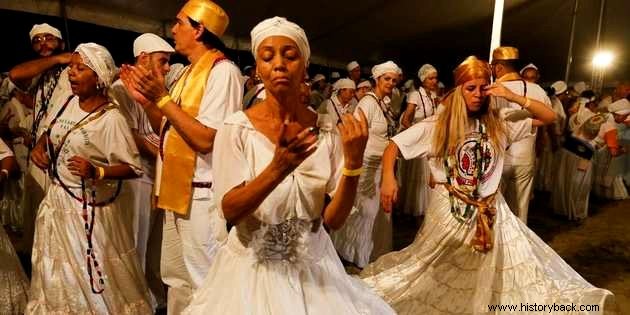
Among the African cults brought by slaves, and rooted in the culture of the Northeast, candomblé and umbanda stand out. Their rituals, hierarchies and ceremonies revere their deities.
If you want to know more :
- June Party
- Cordel Literature
- Frevo
- Candomblé:what it is, history, orixás, rituals and Umbanda
- Umbanda:what it is, origin, orixás, points and terreiro
- Legends of the Northeast
- Cultural diversity in Brazil
